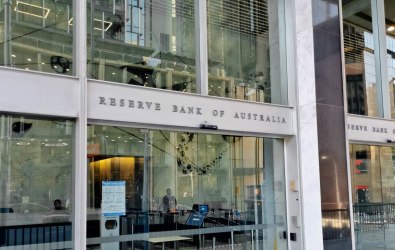Next year could be a watershed year for institutional investment in local infrastructure assets.
The long-awaited report of the Tamberlin inquiry into the New South Wales electricity sector this week recommended a wholesale privatisation of the state's electricity generators and power-station development sites. It also said NSW should consider selling its electricity transmission and distribution networks.
Infrastructure Partnerships Australia (IPA) estimates a full privatisation of NSW's electricity assets would liberate between $50 billion and $58.5 billion in capital and avoided public investment in electricity assets. It believes NSW power generation assets are worth $3.3 billion to $6.5 billion and the distribution and transmission assets are worth $29.2 billion to $34.5 billion. Another $17.5 billion in forecast spending on the state's energy infrastructure over four years would be transferred to the private sector.
The Tamberlin report has important implications for superannuation funds that invest in infrastructure assets. Some of Australia's largest super funds have been successful long-term investors in local assets, such as airports, and international infrastructure projects. There is a view superannuation funds would invest more in badly-needed Australian infrastructure and reduce the country's estimated $700-billion infrastructure backlog, if governments made more projects available, and offered them at the right price and risk profile.
An Ernst & Young/Financial Services Council (FSC) report into superannuation and infrastructure investment in October, "Financing Australia's Infrastructure Needs through Superannuation", highlighted several regulatory, structural and political barriers that must be removed before Australia's $1.3-trillion superannuation sector can play a larger role.
FSC chief executive John Brogden said: "The research shows super funds are willing to invest more in infrastructure projects where they deliver an appropriate risk-weighted return for fund members. However, for this to be possible, a number of structural, regulatory and political barriers must be removed."
These barriers included the lack of a clear project pipeline and government commitment; the lack of suitably structured projects for institutional investment; inconsistent, complex and expensive bidding processes; and regulatory pressures.
Arguably one of the biggest problems is deal flow. There have not been enough public sector assets for sale in recent years, and not enough incentive for institutional investors to increase their involvement in domestic infrastructure investment. That could change if the NSW government undertakes a full privatisation of its electricity assets and finally follows the lead of other states, such as Victoria, which have been at the forefront of energy reform.
Another possible $5 billion to $7 billion of likely asset sales in NSW and South Australia, and a similar amount of announced asset sales in New Zealand, could create substantial infrastructure asset deal flow for institutional investors. Most state governments do not have the balance-sheet capacity to fund much-needed infrastructure projects, and risk jeopardising their cherished credit ratings if they take on more debt. More privatisations of infrastructure assets, while unpopular in parts of the electorate, are likely.
A pipeline of potential public sector asset sales also has important implications for the struggling initial public offerings market, because larger assets would presumably need to be funded with a mix of equity and debt. The Queensland government's privatisation of QR National in November 2010 provided a welcome boost for the float market and brought more retail investors back to the share market. The hope is more state government asset privatisations can do the same.
Investors with long memories know the first privatisations are often the most compelling, as governments ensure early asset sales are successful and pave the way for others. Governments have much work ahead to convince sceptical voters of the merits of selling public assets, but at this stage 2012 shapes as the year of the privatisation - and a year of more opportunity for institutional investment with an eye for infrastructure assets that can provide equity-like returns and bond-like risk.
Tony Featherstone writes on infrastructure for IPA's magazine, Future Building.





